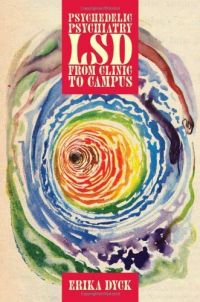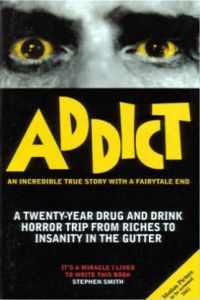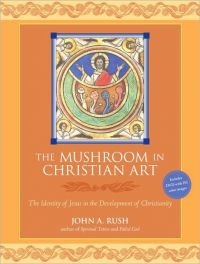Tom Reddard has developed an interactive WebGL fractal explorer app that runs in the browser. Fractal Lab currently works in Chrome or the latest FF4 beta. Try it at fractal.io. Reader Mason says, "Sweet Jesus! I may never leave the house again!"
Via BoingBoing.
_84714_sm.jpg) |
Interesting article on ketamine potentials, good and bad, from The Daily Transmission
While ketamine is generally associated with the dance and rave scene, at these higher doses ketamine is safest taken at home, in a familiar environment to offset the possible dangers of being in a dissociative state in public surroundings. Many taking ketamine fall into the ‘psychonaut‘ category, like this user in a UK study on ketamine use (Muetzelfeldt, et al, 2008), who stated that ketamine allowed “new ways of thinking and an understanding of the mind/body question which 3 years of a philosophy degree could not reach.”
There is some interesting potential for ketamine use in exploring consciousness and success has been documented using ketamine to treat alcoholism and depression. What doesn’t seem to be properly investigated is the extent to which ketamine is harmful to the body, and in what quantities it becomes so.
The most obvious danger of ketamine is of injuring oneself while in the dissociative state. This has been the downfall of several respected members of the psychonaut community such as D M Turner

From New Scientist:
EUROPEANS may have used magic mushrooms to liven up religious rituals 6000 years ago. So suggests a cave mural in Spain, which may depict fungi with hallucinogenic properties - the oldest evidence of their use in Europe.
The Selva Pascuala mural, in a cave near the town of Villar del Humo, is dominated by a bull. But it is a row of 13 small mushroom-like objects that interests Brian Akers at Pasco-Hernando Community College in New Port Richey, Florida, and Gaston Guzman at the Ecological Institute of Xalapa in Mexico. They believe that the objects are the fungi Psilocybe hispanica, a local species with hallucinogenic properties.
Like the objects depicted in the mural, P. hispanica has a bell-shaped cap topped with a dome, and lacks an annulus - a ring around the stalk. "Its stalks also vary from straight to sinuous, as they do in the mural," says Akers (Economic Botany, DOI: 10.1007/s12231-011-9152-5).
This isn't the oldest prehistoric painting thought to depict magic mushrooms, though. An Algerian mural that may show the species Psilocybe mairei is 7000 to 9000 years old.
[Thanks Ben!]
 |
Originally published in 2008 'Psychedelic Psychiatry -- LSD from Clinic to Campus' by the historian Erika Dyck is an excellent, scholarly study into an important slice of LSD history. Mainly concerned with psychiatric LSD research in Canada, the text unpicks with some excellent research, some of the most interesting and important episodes in LSD's short history, and goes a long way to re-establishing the hallucinogen, in its earliest form, as part of the medical discourse.
The central figure in Dyck's history of psychiatric LSD research is Dr. Humphry Osmond (1917-2004). Osmond moved from London, England to Weyburn, Canada in October 1951. Soon after, he began researching the possible therapeutic application of hallucinogenic drugs, mainly mescaline and LSD, at the Saskatchewan Mental Hospital. The socio-political climate in Canada after the second world war was ripe for research. A social democratic government in Saskatchewan was pushing for radical experimentation in public policy, and the extra funding was attracting new researchers to the country; one of these areas was psychiatry.
 |
Originally published independently in 1997, Stephen Smith's 'Addict' has gone through fourteen printings, and according to publisher Westworld International's website it has sold 1.4 million copies worldwide. Seemingly it is the only book published by that outfit and the only book Stephen Smith has written. It does appear regularly in the Amazon.co.uk bestsellers list in the category 'Alcohol & Drug Abuse', which is what first brought it to my attention.
With its single-word title in large shaky capitals on a lurid cover, including a pair of crazed eyes staring out at the reader, 'Addict' does, at first glance, rather fulfil the expectations of the stereotypical tale of drug misadventure. Written in a basic, non-literary style, replete with copy editing errors and typographical oddities, it also has a very 'homemade' quality. Yet as a book it works. As E.M. Forster said in 'Aspects of the Novel', a story 'can only have one merit: that of making the audience want to know what happens next.'
And many of the things that happen in 'Addict' are just too weird and too farfetched not to be true: it's full of stuff you just couldn't make up. But again, conversely, it isn't entirely believable either, having, in certain sections, something of the air of the drunkard's tall tale told in the pub, piling on the exaggerations till breaking point is reached.

Michael Hansmeyer uses algorithms invented by Pixar and painstaking handicraft to generate columns with dizzying detail.
When people mistake photographs of your physical prototypes for computer renderings, you know you've achieved something amazing. That's exactly what happened when Michael Hansmeyer showed off his "computational architecture" column, created by iterating a subdivision algorithm over and over again and then fabricating it out of cardboard.
Hansmeyer's column stands nine feet tall, weighs about 2000 pounds, and is made out of 2700 1mm-thin slices of cardboard stacked on top of wooden cores. It contains somewhere between 8 and 16 million polygonal faces -- too complex for even a 3D printer to handle, according to Hansmeyer. "Every 3D printing facility we spoke to turned us down," he tells Co.Design. "Typically those machines can't process more than 500,000 faces -- the computer memory required to process the data grows nonlinearly, and it also gets tripped up on the self-intersecting faces of the column."
Check out the slide shows at the link below and at Michael Hansmeyer's personal site.
[Thanks Mason!]
 |
Originally published in 2011 'The Mushroom in Christian Art -- The Identity of Jesus in the Development of Christianity' by John A. Rush is a well needed addition to a burgeoning research area in psychedelic studies; namely the possible role hallucinogenic mushrooms took in the Christian religion. Rush has previously published works like 'Spiritual Tattoo' and 'Failed God' and although some of his other works have brushed against the mushroom-Christianity question, this is his first concentrated effort in the area.
Before discussing how Rush has approached the mushroom-Christianity question methodologically through art, it is necessary to first elucidate the point-of-view that he assumes. In this, Rush owes a lot to work done previously by John M. Allegro, author of The Sacred Mushroom and the Cross (1970) and Jan Irvin, author of The Holy Mushroom (2008). Firstly, the argument goes, religions all grew out of a form of shamanism, or 'fertility cults', that venerated plants and the natural world and, as part of which, hallucinogenic mushrooms and other 'entheogenic' plants were divined as gods incarnate. Soma, of the ancient Vedic text the Rigveda, would be an obvious other textual example of this. Secondly, these early fertility cults became increasingly 'corrupted' and the central hallucinogenic rite became the secret of a priest caste, and thus a tool of control. Also very close to some of the arguments that have been developed about the use of Soma.
 | | 'Of COURSE I'm rationing.' |
Okay, maybe there's a bit of hyperbole to that headline. But in its typical inimitable fashion, Cracked reports on "6 Important Things You Didn't Know We're Running Out Of," including tequila and chocolate.
The fact of the matter is that, currently, cultivating cocoa beans just isn't worth it to the average West African farmer.
Not only is tending to cocoa trees insanely time-consuming (it takes up to five years to grow a new crop), but everything has to be done by hand in often unbearable heat. And at the end of the day, the average cocoa farmer can expect to earn about 80 cents a day for his trouble. That satisfying feeling that his product is contributing to America's obesity epidemic is just not enough anymore, so in fewer than 20 years, chocolate might become an expensive rarity, like caviar. When was the last time you had caviar?
Cocoa beans can be produced outside West Africa, but only within 10 degrees of the equator, an area that you might quickly recognize as including some of the most politically unstable regions on the planet. It would explain why chocolate prices have doubled in the last six years and will only continue to go up.
Tequila is even worse - they just decided to burn a bunch of agave fields to plant corn for ethanol (which DOES NOT TASTE GOOD IN A MARGARITA PEOPLE). Read more at Cracked - of course, the #1 thing we're running out of is water, but srsly, I think people forget we can just accelerate the melting of the polar caps with giant lasers from space.
According to Libyan propaganda, it is Tramadol, an opioid analgesic. So says Anderson Cooper. I love the way Coop goes after the drug angle and berates the Information Minister to death. The Silver Fox shows an impressive knowledge of hallucinogens, for a media talking head.
Anderson Cooper fact checks Gadhafi on 'hallcination pills'. Go get him Coop!
An overtly psychedelic video from FunnyOrDie.com. It moves from the gross to the surreal to the transcendent. I wonder what Grof would say about this one
|

Recently @ DoseNation
|
|



_84714_sm.jpg)













